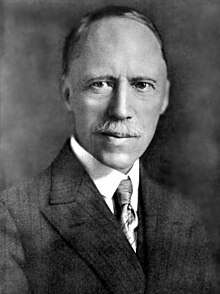Jakob Sederholm
| Jakob Sederholm | |
|---|---|

Jakob Sederholm
|
|
| Born | 20 July 1863 Helsinki, Finland |
| Died | 26 June 1934 (aged 70) |
| Nationality | Finnish |
| Fields | petrologist |
| Institutions | Geological Survey of Finland |
| Known for | Jotnian, Migmatite, Myrmekite, Rapakivi granite |
| Notable awards |
Murchison Medal (1928) Penrose Medal (1928) |
| Signature | |
Jakob Johannes Sederholm (20 July 1863 – 26 June 1934) was a Finnish petrologist most associated with his studies of migmatites.
Troubled by illness throughout his life, Sederholm originally chose to study geology to allow him to work outdoors. After studying first in Helsinki (where he was a student of Fredrik Johan Wiik), then in and Heidelberg, Sederholm returned to Finland to work for the Geological Survey of Finland. In 1893 he assumed the role of director of this institution, a post he occupied until his death forty years later.
Working on local Precambrian basement rocks, Sederholm instigated a map-making programme that, between 1899 and 1925, published many maps and descriptions of their geological history. Gneisses in the areas he studied (the so-called Baltic Shield) were often of mixed composition, with layers of granitic rock being interleaved with metamorphic rock. Sederholm termed these as migmatites, and viewed them as the product of the intrusion of igneous magma into metamorphic rocks at depth.
During his career Sederholm received both the Murchison Medal from the Geological Society of London (1928) and the Penrose Medal from the Geological Society of America (also 1928). The mineral sederholmite is named in his honour.
...
Wikipedia
